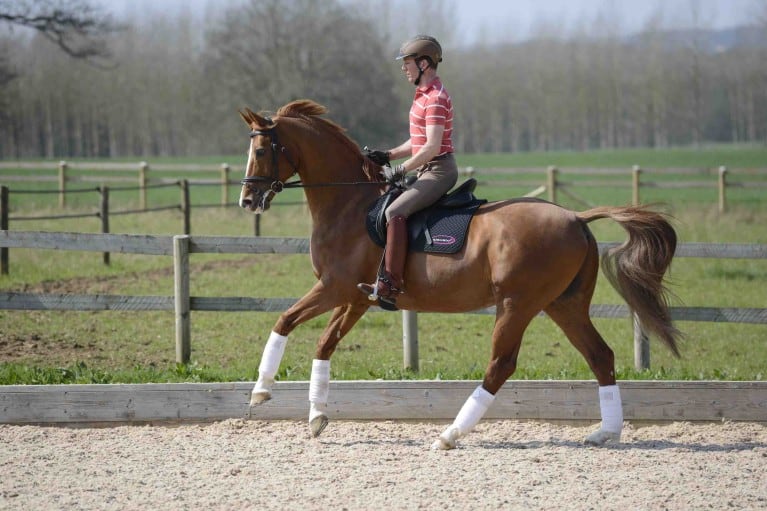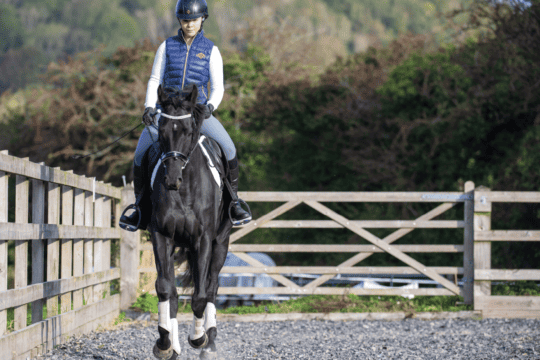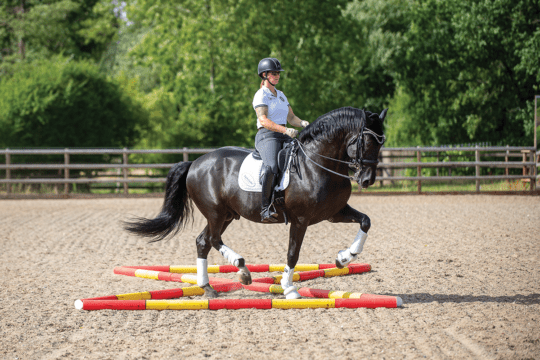Carl Hester helps H&R editor Nicky’s horse, Lucy, refine her flying changes. As usual, he has a couple of helpful exercises to make flying changes easier for all of us!

Lucy knows how to do flying changes, but is often a fraction late behind, or early in front, as some inspirational trainers perfer to think of it. Here, Carl Hester helps Lucy ring the changes!
“Again, because Lucy isn’t forward enough off the leg, she isn’t quick enough to change her hind leg, so the changes become split,” Carl explained. “She understands the aids for the changes, but now they need refining.
Try these exercises…
 Exercise 1
Exercise 1
Figure of eight
Ride a circle to the left and as the left foreleg comes to the ground, touch your horse with your inside leg – this helps to activate the inside hind. Then come out of the circle as if you were going to ride a figure of eight and ask for a flying change, keeping your ‘new’ inside leg on the girth to stop the horse falling onto the shoulder.
Carl advised: “Be careful not to make too many corrections, because it can cause some horses to panic, which is the last thing you want to do with flying changes.
“It’s all about finding an easy balance with the leg – too much leg and Lucy bucks into the change, too little and she isn’t forward enough.”
 Exercise 2
Exercise 2
Half-pass
If your horse has a tendency to change in front first, try asking for the changes from a half-pass position.
“This works, because in half-pass, the shoulder is slightly ahead of the hindquarters, so when you go to make the change and ask the shoulders to go the other way, it is harder for the front end to change first,” Carl explained.
Lucy, finding that Carl had ‘blocked off’ her front end until she changed her hind legs, had little choice in the matter!
However, she didn’t quite believe that her hind legs could start this exercise – and as a result, everything was a little airbound to begin with!
Our rosette symbols highlight expert riding advice for various levels
















